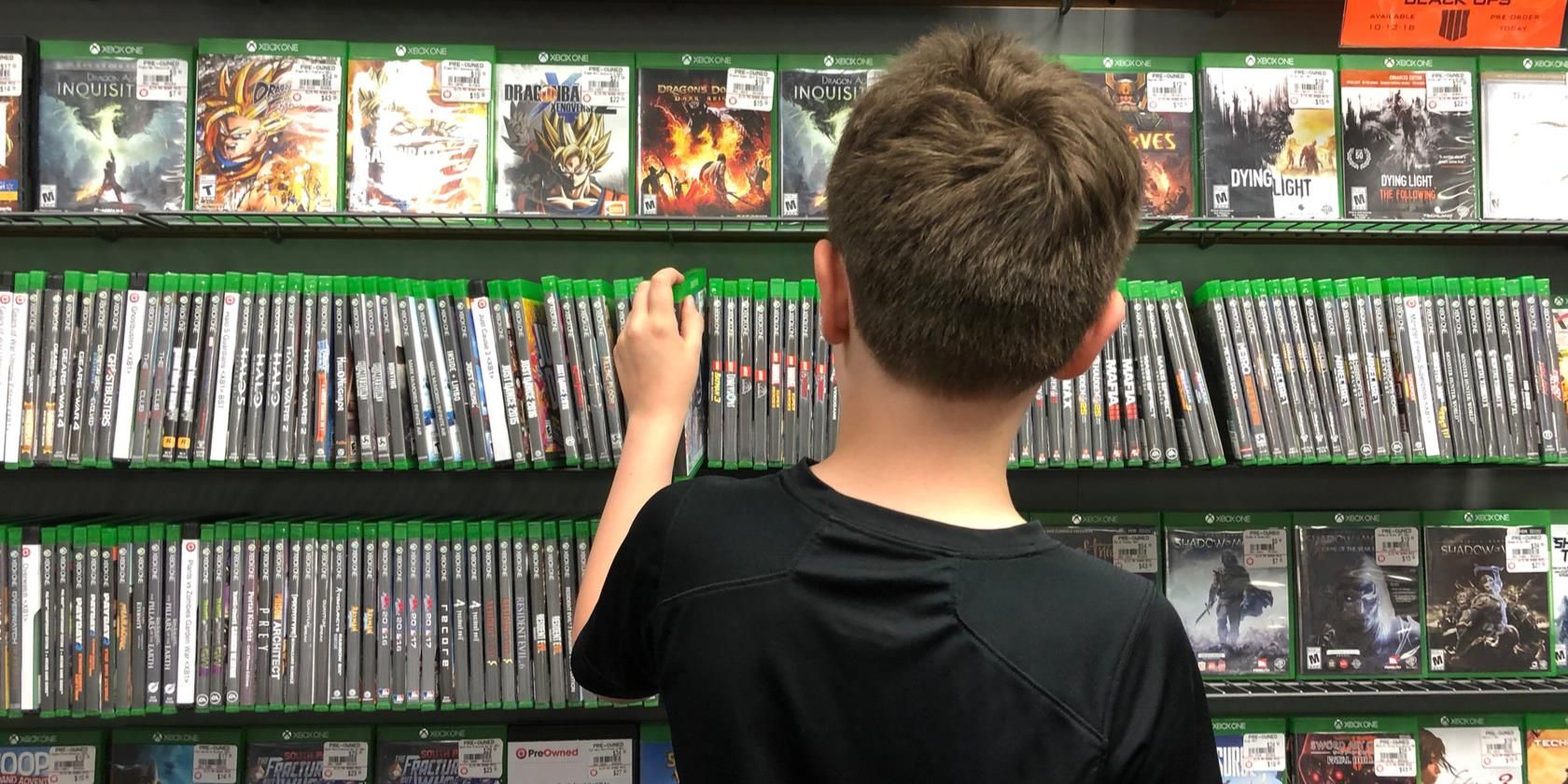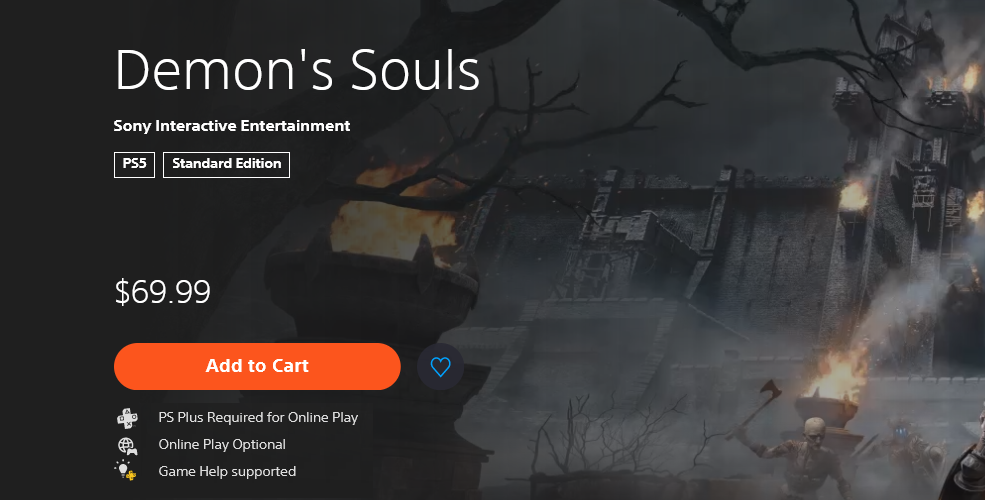Since gaming entered the HD era in 2005 with the Xbox 360, the standard piece of a new video game has been $60. However, with the release of the PlayStation 5 and Xbox Series S|X in 2020, the price of some titles has gone up to $70. Will this become the new normal for all games?
Let's look at the history of video game pricing, which games are releasing for $70, and what will likely happen in the future.
A Look Back at Historical Video Game Pricing
The PS5 and Xbox Series S|X represent the ninth generation of video game consoles. A price tag of $60 became standard starting in the seventh generation, with the Xbox 360 and PlayStation 3. During this time, Nintendo undercut this by charging $50 for full-price Wii titles.
However, with the Wii U (part of the eighth generation with the Xbox One and PS4), Nintendo moved up to $60 games too. This price has persisted with Switch titles.
$50 was the baseline price in earlier generations for some time. From roughly the PlayStation's launch in 1995 (the fifth generation) to the end of the sixth generation (the Xbox, GameCube, and PS2), most big-name games were priced at $50. There were some outliers, such as more expensive N64 titles, but the $50 price point was standard.
In the fourth generation (SNES, Genesis) and earlier, game prices could vary wildly so that era isn't very useful for this discussion.
Of course, simply comparing numbers isn't accurate; we need to adjust for inflation to get an accurate picture. A $50 PlayStation game in 1995 is equivalent to about $87 in 2021. In 2001, a $50 GameCube game would be equal to about $75 today. And a $60 game for Xbox 360 in 2005 would cost $81 in today's money.
With this, we can see that a $70 PS5 game is still less expensive than a $50 PS1 game. Let's look at more details about the change next.
What Games Have Released at $70 So Far?
Since the ninth generation began, the following games have been released at $70 on the new consoles. Their last-gen and PC versions (where applicable) are still priced at $60:
- NBA 2K21, published by 2K Sports
- Call of Duty: Black Ops Cold War, published by Activision
- Demon's Souls, published by Sony
- Godfall, published by Gearbox
- MLB The Show 21, published by Sony
We know that Ratchet & Clank: Rift Apart, a Sony-published PS5 exclusive coming in June 2021, will cost $70 as well.
Other major cross-generation titles have stayed at the older price point. Assassin's Creed Valhalla, for example, released at $60. On PlayStation, one purchase of that game provides access to both the PS4 and PS5 version. Similarly, thanks to Smart Delivery on Xbox, you automatically get the "best version" of supported games you own.
Why Are Publishers Raising Game Prices?
Strauss Zelnick, the CEO of Take-Two (who publishes the NBA 2K series), is one of the corporate names that has spoken about the game price increase.
He commented on how long it's been since games have gone through a price increase, and said that the company thinks consumers are "ready for" $70 games. This is because titles like 2K21 provide "an array of extraordinary experiences [and] lots of replayability," he says.
Take-Two inferred that it plans to make decisions about pricing for other games on a case-by-case basis. Xbox's management has offered similar thoughts, saying that game pricing is complicated. For example, Xbox-published title Ori and the Will of the Wisps released at $30, while other games from the studio have been $40 or $60. Ubisoft hasn't raised the price on its first few next-gen games, but could in the future.
So a smaller spin-off game might launch at $50, given its reduced scope. But for a yearly series like NBA 2K that fans buy without question every year, why wouldn't the publisher raise the price?
Predicting Pricing Trends in 2021 and Beyond
It's difficult to foretell any kind of game pricing pattern this early, for several reasons. One is that the adoption of new consoles has been slow, thanks to limited supply and scalpers snatching up a lot of the stock that becomes available. As a result, not as many people are interested in buying games for a new console as would usually be.
Subscription services have also removed the need to buy games at full price, in a lot of cases. Xbox Game Pass is such a great value and includes all Xbox-published games the day they come out. So people who rely on a subscription service might not care about buying games at launch (and thus their cost) anyway.
Cross-generation bundles, like the ones mentioned above, also have an effect. Since eighth-generation consoles are still supported, most publishers want to make it easy for owners of older systems to upgrade their games at no cost, or for a small additional fee.
This is different than in the past, such as when Call of Duty 2 launched (at $60) for the Xbox 360, but was not on the original Xbox. If people wanted to play the new game, their only choice was to pay the higher price. Once games aren't made for the older systems anymore, the cost could go up permanently.
With all this in mind, we'll probably see prices solidify once the new consoles are readily available and support for the eight generation drops off.
Is This Price Increase Justified?
Now that we've looked at the current state of game pricing, we can consider whether it's fair. There's no denying that the price of games hasn't increased proportional to inflation over time, but there are more factors to it than this.
A lot of arguments in favor of raising the price of games hinge on the fact that the cost of producing a game has skyrocketed over the past few decades. And while this is true, it doesn't tell the whole story.
Where Money Is Actually Spent
It's important to know that a lot of the money spent on big games goes towards marketing, not actual development. For example, Cyberpunk 2077 cost over $120 million to produce. With that kind of money, you think it would be an exemplary title.
But the end product was a disaster: full of bugs, nearly unplayable on consoles to the point where Sony removed it from the PlayStation Store, and even had sections that triggered seizures for some players. Cyberpunk's development was marked by crunch for its developers, with employees forced to work grueling schedules to get it done by launch.
Clearly, the vast amounts of money CD Projekt spent on this title didn't all go towards improving its quality or making sure the developers had a healthy experience while making it. Why should players have to pay more for something that's a worse product and supports poor employee treatment?
Alternative Ways for Games to Make Money
Another obvious change over the years is that games have so many alternative methods of earning money after they release nowadays—often because the game you get at launch isn't even the entire package.
Even after paying $60 (or $70) for a new game, there are very often microtransactions for loot boxes, alternative costumes, battle passes, and similar. This is how games like Fortnite, which are free to download, can still make hundreds of millions of dollars in revenue.
For a single-player game that's released as a full experience and doesn't try to nickel and dime you, it's easier to make an argument for a $70 price. But for a title like NBA 2K21, claiming that the game offers "extraordinary experiences" and is thus worth the price increase is laughable. Sports games are notorious for being almost identical with each annualized release, and they have obnoxious monetization deeply ingrained.
Indie Games Offer Much More
We've focused on big-budget AAA games in this discussion. But it's hard to ignore that indie games offer amazing experiences, at much lower prices, without most of these headaches.
Hades was one of the best-reviewed games of 2020. It came from indie studio Supergiant Games, costs $25, and has no in-game purchases. Hollow Knight is one of the most value-packed indie games of all time; it still goes for its launch price of $15, despite adding several major DLC packs to the experience (at no cost for existing owners).
These games have a small handful of developers and tiny budgets compared to the games that publishers are starting to charge $70 for. They don't have toxic microtransactions that trick you into spending money. And these games are often better reviewed than AAA meltdowns.
It seems that instead of charging $70, major studios should focus on scaling back their titles to a manageable scope and making them, above all, fun games that people want to play.
Publishers Will Charge What They Can Get Away With
We've looked at what the cost of video games was in the past, how it's changing, and where it's going. As the ninth generation continues, we'll likely see a few publishers test the waters, set their game prices based on what people are willing to pay, and then others will follow suit.
If these higher prices have you upset, remember that one of the best ways to save money on gaming is to wait for price drops or buy used games. With some patience, the $70 price tag should rarely affect you.
Image Credit: CreativeAngela/Shutterstock


